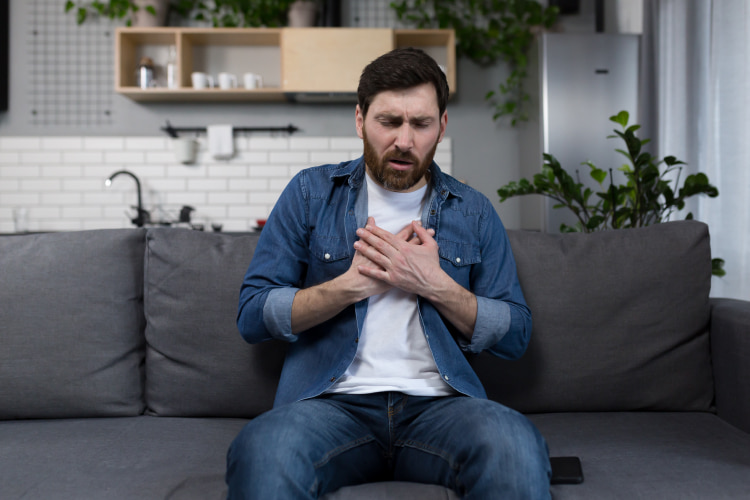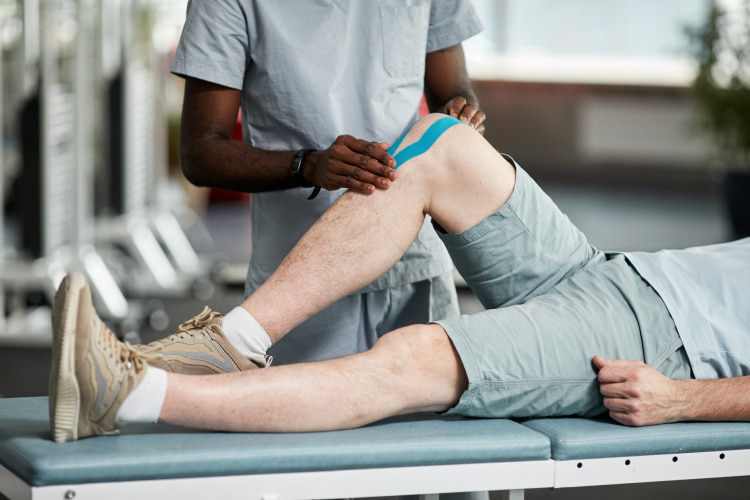Car crashes are a common occurrence on roads worldwide. They lead to a significant number of traumas each year. When vehicles collide, the force and impact can cause severe harm to:
- Drivers.
- Passengers.
- Pedestrians.
Understanding the common traumas is crucial for:
- Crashes prevention.
- Effective medical therapy.
Our article will tell you about common car accident injuries. By identifying these common traumas, it becomes possible to develop preventative measures. Also, medical professionals can enhance their understanding of these traumas. And they will be able to implement targeted therapy for victims.
This article aims to examine the condition commonly associated with car crashes. It will delve into various aspects of traumas, including:
- Their causes.
- Symptoms.
- Long-term effects.
This article strives to raise awareness about the importance of road safety and the need for comprehensive healthcare interventions to aid accident victims.

Whiplash
Whiplash is one of the most prevalent accident injuries. It occurs when a sudden jolt or impact causes the head to snap forward and backward. It strains the neck’s muscles and ligaments. Symptoms of whiplash include neck ache, stiffness, headaches, dizziness, and limited motion. In severe cases, individuals may experience chronic ache and difficulty performing everyday activities. It is important to be aware of the potential short-term and long-term whiplash effects and seek appropriate treatment options such as physical therapy, ache medication, and the use of a neck brace.

Broken Bones
The impact of a vehicle crash can exert tremendous force on the body, leading to broken bones. This injury from car accidents commonly occurs in the arms, legs, ribs, and pelvis. The severity of these fractures can range from hairline cracks to complete breaks. The symptoms of a broken bone include:
- Intense ache.
- Swelling.
- Bruising.
- Difficulty moving the affected area.
Therapy may involve immobilization with a cast or splint. Also, curing includes ache medication, and surgical intervention to realign the bones.

Head Injuries
Head conditions are among serious injuries from car accidents. They can occur when an individual’s head strikes a hard surface. It can be the steering wheel or dashboard during a vehicle crash. These conditions can range from minor concussions to traumatic brain injuries (TBIs). Symptoms of head traumas may include:
- Headaches.
- Dizziness.
- Confusion.
- Memory problems.
- Nausea.
- Sensitivity to light and noise.
Severe head traumas can lead to long-term complications. They are cognitive impairment, behavioral changes, and motor function deficits. Immediate medical attention is crucial for accurate diagnosis and appropriate healing.

Spinal Cord Injuries
The impact of this type of injuries from car accidents can cause damage to the spinal cord. It leads to partial or complete loss of function below the trauma site. Spinal cord traumas can result in paralysis, loss of sensation, and impaired functions. The severity depends on the damage’s location and extent. Therapy for spinal cord conditions often involves surgery, rehabilitation, and lifelong medical care. These traumas can significantly impact a person’s quality of life. They need adaptive equipment, modifications to living spaces, and ongoing support.

Soft Tissue Injuries
Soft tissue accident injuries refer to muscle damage, ligament, and tendon damage. They are common in vehicle crashes. It’s due to the sudden and forceful movements involved. Strains, sprains, and tears are typical soft tissue traumas. Symptoms include ache, swelling, bruising, and limited mobility. The initial therapy measures include rest, ice, compression, and elevation (RICE). Physical therapy and ache management techniques may also be recommended.

Chest Injuries
The impact from a car accident can cause an injured chest. It’s particularly when people are not wearing seat belts or airbags fail to deploy. These traumas may include fractured ribs, collapsed lungs, and internal organ damage. Symptoms include difficulty breathing, sharp ache, and bruising. Severe conditions may need immediate medical intervention. For example, surgery, to repair internal damage and stabilize breathing.

Knee Injuries
Knee injuries are common in car crashes. They often result from the impact against the dashboard or steering column. They may include:
- Fractures.
- Dislocations.
- Ligament tears (such as the anterior cruciate ligament or ACL).
- Meniscus tears.
Symptoms of serious knee injuries from car accidents include ache, swelling, instability, and difficulty bearing weight. Healing options range from conservative measures to surgical interventions.

Psychological Injuries
Vehicle crashes can have a profound impact on an individual’s mental well-being. Psychological traumas, such as PTSD, anxiety, and depression, are common among victims. Flashbacks, nightmares, mood swings, and avoidance behaviors are some of the symptoms experienced. It is important to address psychological traumas alongside physical traumas through:
- Therapy.
- Counseling.
- Support groups to promote healing and recovery.

Internal Injuries
Internal accident injuries may occur when a car crash’s force causes internal organs trauma. They are not immediately visible and can be life-threatening. Damage to organs such as the liver, spleen, kidneys, and lungs may lead to internal bleeding. And they need immediate medical attention. Symptoms of internal traumas include abdominal ache, dizziness, fainting, and nausea. Prompt diagnosis through medical imaging and surgical intervention may be necessary.
How Can Chiropractors Help with Accident Injuries?
Spinal therapy can play a crucial role in helping individuals recover from common car accident injuries. Doctors have specialized knowledge and skills. They can aid in alleviating ache, restoring mobility, and promoting healing. Here are how manual therapists can assist with vehicle crash traumas:
- Ache Relief. Manual therapists use various techniques. They are spinal adjustments, manipulations, and soft tissue therapies. It reduces ache caused by traumas. They focus on realigning the spine and joints. It relieves pressure on nerves and addresses muscular tension and inflammation.
- Restoring Mobility. After a vehicle crash, individuals often experience restricted movement. It’s due to muscle strains, joint dislocations, or whiplash. Manual therapists use targeted corrections and exercises to restore proper range of motion from common car accident injuries. It allows patients to regain mobility and perform daily activities without limitations.
- Rehabilitation. Doctors develop customized rehabilitation programs that target specific traumas. These programs may include exercises, stretches, and rehabilitative therapies. It’s to strengthen muscles, improve flexibility, and enhance physical function.
- Non-Invasive Approach. Manual care emphasizes non-invasive and drug-free therapies for crash traumas. Doctors use hands-on techniques to address the root cause of the ache rather than relying on medication or invasive procedures.
- Holistic Care. Doctors consider the entire musculoskeletal system when assessing and treating accident injuries. They take into account the interconnectedness of the body. And they aim to restore balance and function, promoting holistic healing.
- Preventing Long-Term Complications. Prompt manual care after a vehicle crash can help prevent long-term complications. Doctors can cut the risk of chronic ache, stiffness, and other issues.
- Collaborative Approach. Doctors often work closely with other healthcare professionals. They are physical therapists, orthopedic specialists, and ache management specialists. They provide comprehensive care for traumas. This collaborative approach ensures that patients receive the most effective and coordinated therapy.
When to See a Chiropractor After a Car Accident?
Prompt and appropriate medical attention is crucial for:
- Effective management.
- Recovery from accident injuries.
Understanding when to see a manual therapist can help crash victims receive timely healing. And it will prevent potential long-term complications.
In general, seeing a doctor as soon as possible after a vehicle crash is advisable. Even if there is no immediate or obvious trauma, some common car accident injuries may not manifest signs until hours or days after the vehicle crash. Early intervention by a doctor can help identify and address these conditions.
Certain signs should prompt immediate chiropractic after accident evaluation.
These include:
- Neck or back ache.
- Headaches.
- Dizziness.
- Numbness or tingling in the extremities.
- Limited range of motion.
- Muscle stiffness.
- Difficulty performing daily activities.
It’s important not to dismiss or ignore these signs. They could state underlying musculoskeletal traumas that need attention.
Even if you have received initial medical care, it’s still beneficial to consult with a manual therapist. They have specialized knowledge and training in assessing and treating accident injuries.
Bottom Line
In conclusion, seeking manual care after a car accident is a wise decision to address potential traumas. Doctors can:
- Provide effective ache relief.
- Promote healing.
- Restore proper function of the musculoskeletal system.
Their expertise in spine and healing make them valuable providers for common car accident injuries.
Early intervention and timely curing can significantly contribute to a smoother recovery. And it will cut long-term complications.
FAQ
What to expect physically after a car accident?
After a car accident, it is common to experience various physical effects. These can include soreness, stiffness, muscle aches, bruises, and swelling. You may also experience pain in specific areas, such as the neck, back, shoulders, or hips. Also, you might encounter difficulty with mobility and range of motion. It’s due to injuries or muscle tension.
What internal injury is caused by a car accident?
Car accidents can result in various internal injuries. It depends on the nature and severity of the impact. Internal injuries include internal bleeding, organ damage, pneumothorax, and rib fracture. These injuries may not always be immediately clear and need medical evaluation.
How long will my body hurt after a car crash?
The duration of physical pain following a car crash can vary greatly. It depends on the individual and the extent of their injuries. Some people may experience pain for a few days or weeks. At the same time, others may have lingering discomfort for several months.
When should I resume physical activities after a car accident?
It depends on the nature and severity of the injuries. It is crucial to follow the guidance of your healthcare provider. They can assess your condition and provide specific recommendations. Sometimes, you may need to refrain from certain activities until you have healed.
Can car accidents cause long-term or chronic pain?
Yes, car accidents can sometimes result in long-term or chronic pain. Injuries sustained in a car accident can lead to ongoing pain that persists for months or even years. Whiplash, spinal injuries, nerve damage, or musculoskeletal injuries can contribute to chronic pain. If you’re experiencing prolonged pain after a car accident, consult with a doctor.
What are common psychological injuries that can occur after a car accident?
Besides physical injuries, car accidents can also cause psychological injuries. Common psychological injuries resulting from car accidents include PTSD, anxiety, depression, and phobias. These psychological injuries can have a significant impact on a person’s daily life. And they may need professional mental health support or therapy.


Related posts
Today is an era dominated by digital conveniences and desk-bound occupations. So, the effects of a sedentary lifestyle have emerged as a pervasive concern.
Our guide aims to equip people with the knowledge to understand the intricacies of internal injuries. They are arising as a result of car accidents. Join us on this informative trip.
Beyond merely treating injuries, chiropractors work to enhance the body's biomechanics. It allows sportsmen to move more potently and reduces the risk of future injuries.